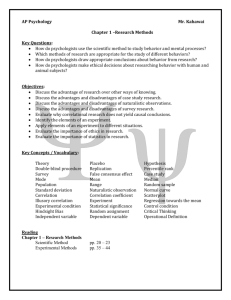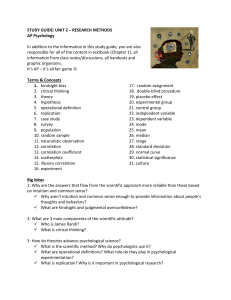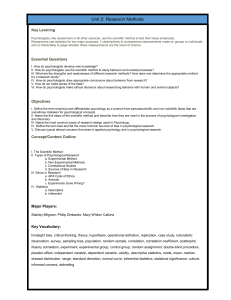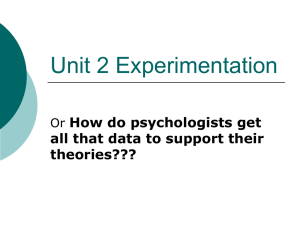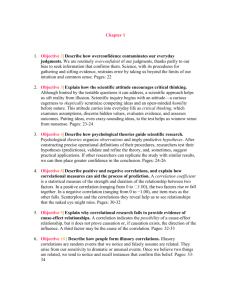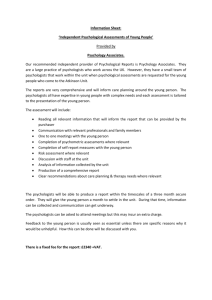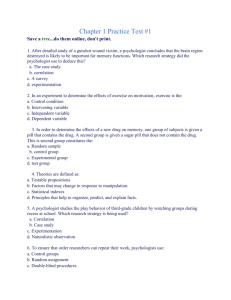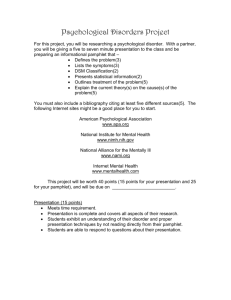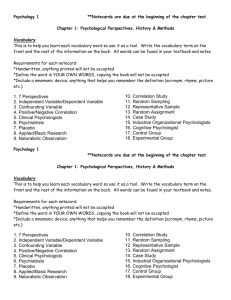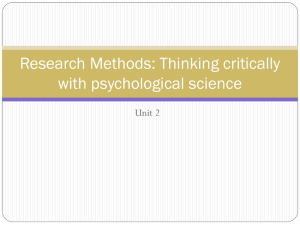Chapter 1: Thinking Critically with Psychological Science
advertisement
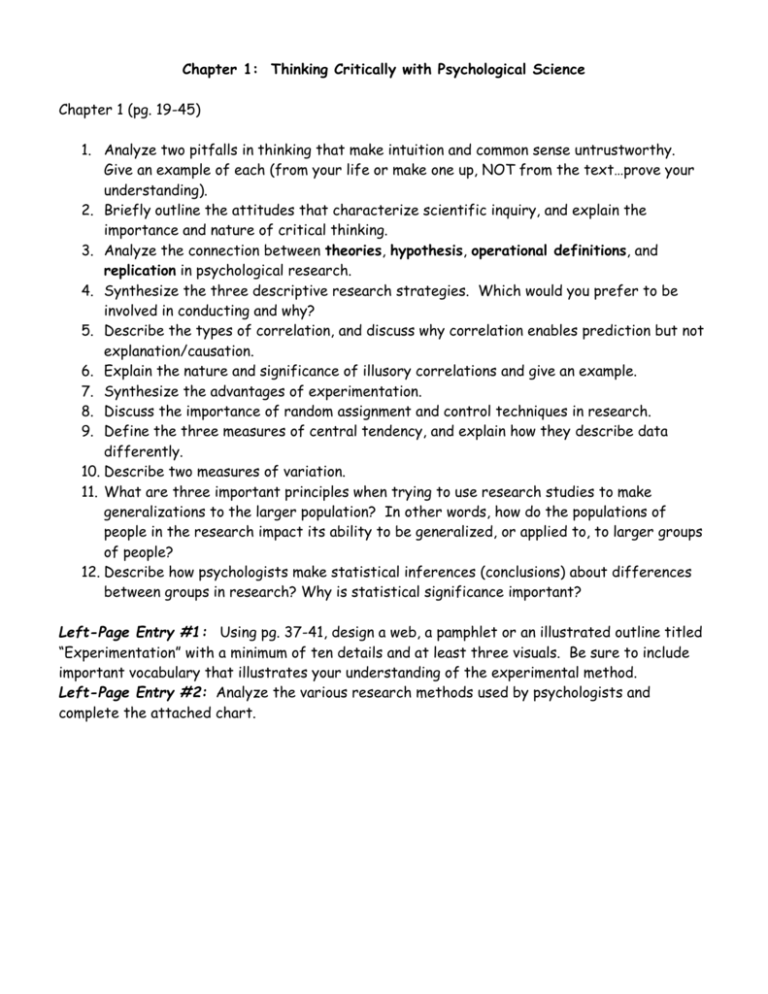
Chapter 1: Thinking Critically with Psychological Science Chapter 1 (pg. 19-45) 1. Analyze two pitfalls in thinking that make intuition and common sense untrustworthy. Give an example of each (from your life or make one up, NOT from the text…prove your understanding). 2. Briefly outline the attitudes that characterize scientific inquiry, and explain the importance and nature of critical thinking. 3. Analyze the connection between theories, hypothesis, operational definitions, and replication in psychological research. 4. Synthesize the three descriptive research strategies. Which would you prefer to be involved in conducting and why? 5. Describe the types of correlation, and discuss why correlation enables prediction but not explanation/causation. 6. Explain the nature and significance of illusory correlations and give an example. 7. Synthesize the advantages of experimentation. 8. Discuss the importance of random assignment and control techniques in research. 9. Define the three measures of central tendency, and explain how they describe data differently. 10. Describe two measures of variation. 11. What are three important principles when trying to use research studies to make generalizations to the larger population? In other words, how do the populations of people in the research impact its ability to be generalized, or applied to, to larger groups of people? 12. Describe how psychologists make statistical inferences (conclusions) about differences between groups in research? Why is statistical significance important? Left-Page Entry #1: Using pg. 37-41, design a web, a pamphlet or an illustrated outline titled “Experimentation” with a minimum of ten details and at least three visuals. Be sure to include important vocabulary that illustrates your understanding of the experimental method. Left-Page Entry #2: Analyze the various research methods used by psychologists and complete the attached chart.
